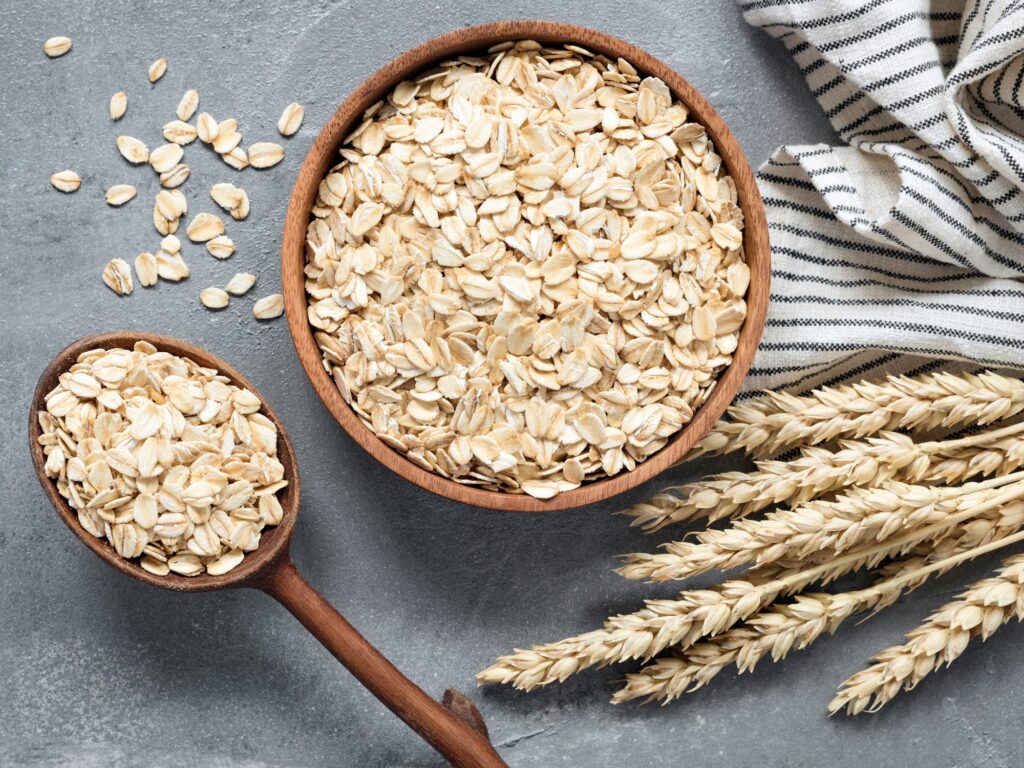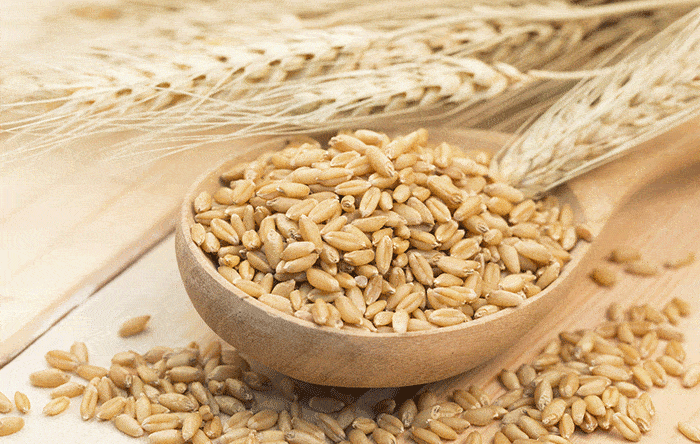What is Oat?
The oat (Avena sativa), sometimes called the common oat, is a species of cereal grain grown for its seed, which is known by the same name (usually in the plural, unlike other cereals and pseudocereals). While oats are suitable for human consumption as oatmeal and rolled oats, one of the most common uses is as livestock feed.
Like wheat, oats generally have been developed into different varieties that are adapted to planting at different times of the year. Spring oats are planted for a late summer harvest, whereas Winter oats are planted for harvesting in early to mid summer. Overwintering varieties are more commonly grown in regions with mild winters.
Oats generally possess an upright stem and fibrous root system. The inflorescence consists of a number of branches, or racemes, and spikelets (20–150 per plant) which usually contain three florets or flowers (naked oats produce 3–7 flowers per spikelet).
Oats have numerous uses in foods; most commonly, they are rolled or crushed into oatmeal, or ground into fine oat flour. Oatmeal is chiefly eaten as porridge, but may also be used in a variety of baked goods, such as oatcakes, oatmeal cookies, and oat bread. Oats are also an ingredient in many cold cereals, in particular muesli and granola. Oats are also used for production of milk substitutes (“oat milk”).

Types of Oats
Oats are available in a variety of forms, based on how they are processed. The following list shows the types of oats in order of least to most processing. Although the nutritional content between steel-cut and instant oats is relatively similar, their effects on blood sugar are not. The least processed oats, like groats or steel-cut, generally take longer to digest so they have a lower glycemic index than rolled or instant oats.
- Oat Groats: The whole oat kernels that have been cleaned, with only the loose, inedible hulls removed. Groats contain the intact germ, endosperm, and bran.
- Oat bran, which contains the most fiber in a groat, is also removed and eaten as a cereal or added to recipes to boost fiber content.
- Steel-Cut or Irish: Oat groats that have been cut into two or three smaller pieces either using a steel blade. The larger the size of the pieces, the longer they will take to cook.
- Scottish Oats: Oat groats that have been stone-ground into a meal, creating a porridge-like texture when cooked.
- Rolled or Old-Fashioned: Oat groats that have been steamed, rolled and flattened into flakes, and then dried to remove moisture so they are shelf-stable.
- Quick or Instant: Oat groats that are steamed for a longer period and rolled into thinner pieces so that they can absorb water easily and cook very quickly. Be aware that many brands of instant oats come sweetened or flavored, so be sure to check the ingredients for no added sugar.
What is Barley?
Barley, (Hordeum vulgare), is a cereal plant of the grass family Poaceae and its edible grain. Grown in a variety of environments, barley is the fourth largest grain crop globally, after wheat, rice, and corn. Barley is commonly used in soups, stews, and health products, though it is primarily grown as animal fodder and as a source of malt for alcoholic beverages, especially beer.
Barley has a nutlike flavour and is high in carbohydrates, with moderate quantities of protein, calcium, and phosphorus and small amounts of the B vitamins. Because it contains little gluten, an elastic protein substance, it cannot be used to make a flour that will produce a porous loaf of bread.
Hordeum vulgare is an annual grass featuring erect stems with few, alternate leaves. Barley comes in two varieties, distinguished by the number of rows of flowers on its flower spike. Six-row barley has its spike notched on opposite sides, with three spikelets at each notch, each containing a small individual flower, or floret, that develops a kernel.
Two-row barley has central florets that produce kernels and lateral florets that are normally sterile. Whereas six-row barley has a higher protein content and is more suited for animal feed, two-row barley has a higher sugar content and is thus more commonly used for malt production.
Barley is adaptable to a greater range of climate than any other cereal, with varieties suited to temperate, subarctic, or subtropical areas. Although it does best in growing seasons of at least 90 days, it is able to grow and ripen in a shorter time than any other cereal. Cultivation is possible even in very short seasons such as those of the Himalayan slopes, although the yield there is smaller than in less harsh areas.
Barley, with greater resistance to dry heat than other small grains, thrives in the near-desert areas of North Africa, where it is mainly sown in the autumn. Spring-sown crops are especially successful in the cooler, moist areas of western Europe and North America.

Difference Between Oats And Barley In Tabular Form
| BASIS OF COMPARISON | OATS | BARLEY |
| Scientific Name | Avena sativa. | Hordeum vulgare. |
| Genus | Oats belong to the genus Avena. | Barley belongs to the genus Hordeum. |
| Climate | Oats are grown in various types of soils in cool and humid climates. | Barley is grown in all regions around the world in any climate |
| Growth | Oats grow in small florets. | Barley grows in spikes |
| Use | Oats are used as oatmeal and rolled oats. | Barley is used to produce many healthy foods including barley flacks, soups, stews, bread, and beer |
| Nutritional Value | Oats are rich in proteins and minerals. | Barley is rich in dietary fibre, manganese, and copper. |
| Consumption | Oats are consumed by livestock as well as humans. | Humans eat barley but livestock prefer eating other grains while avoiding barley due to barley hulls. |